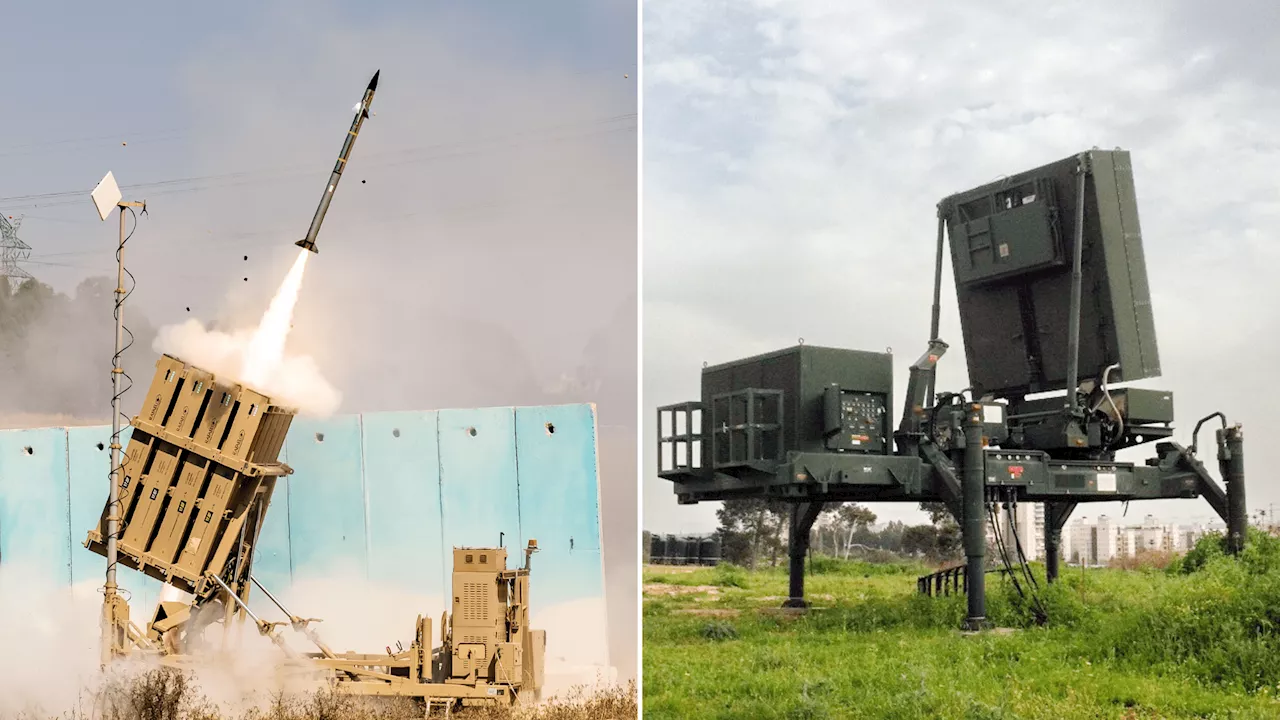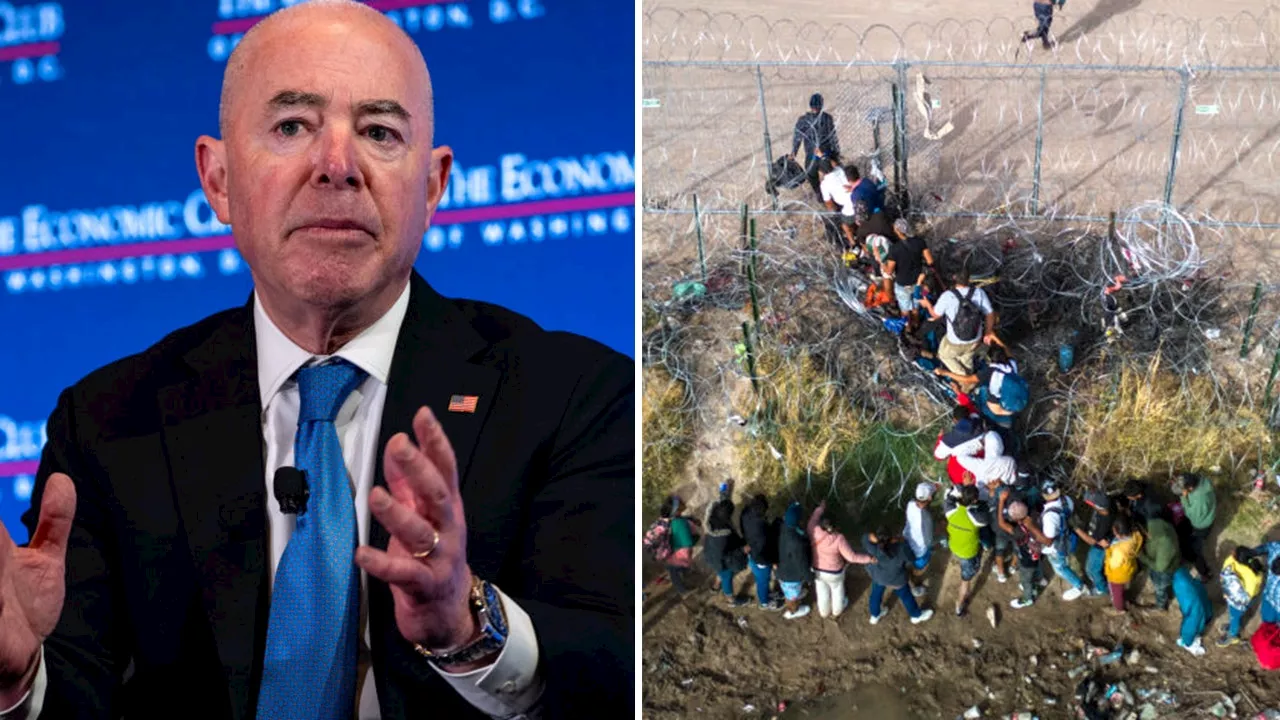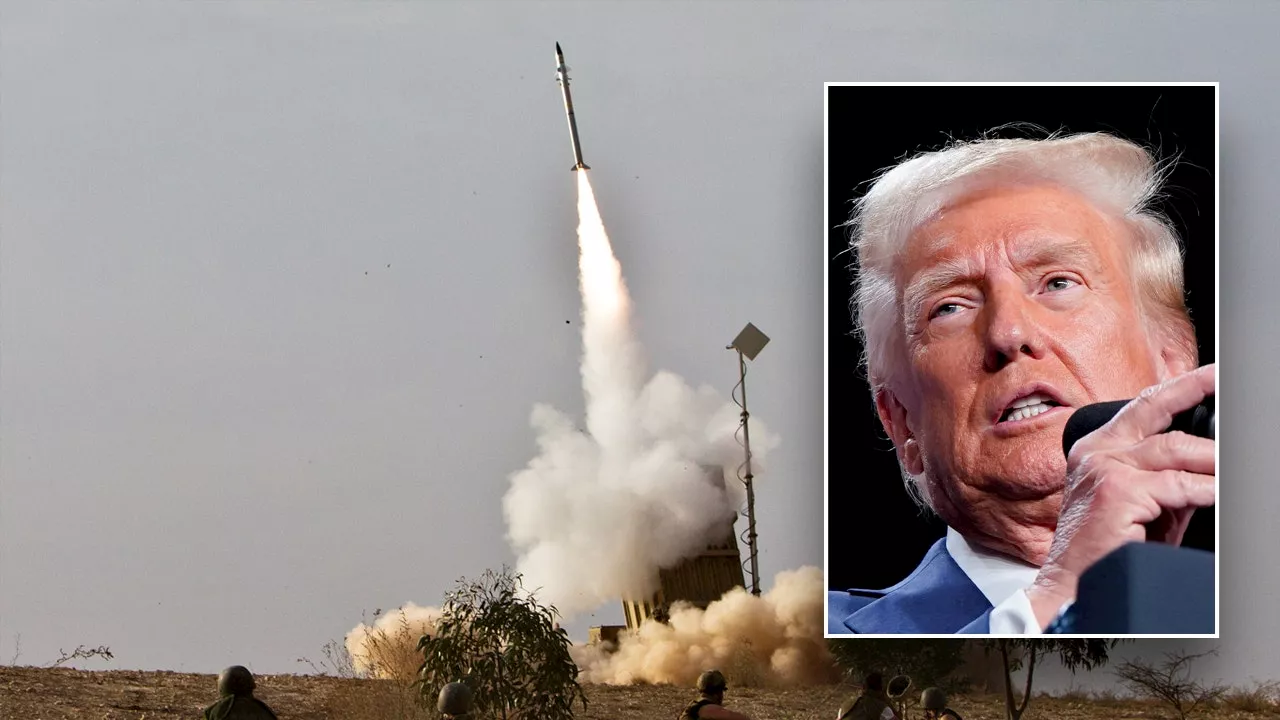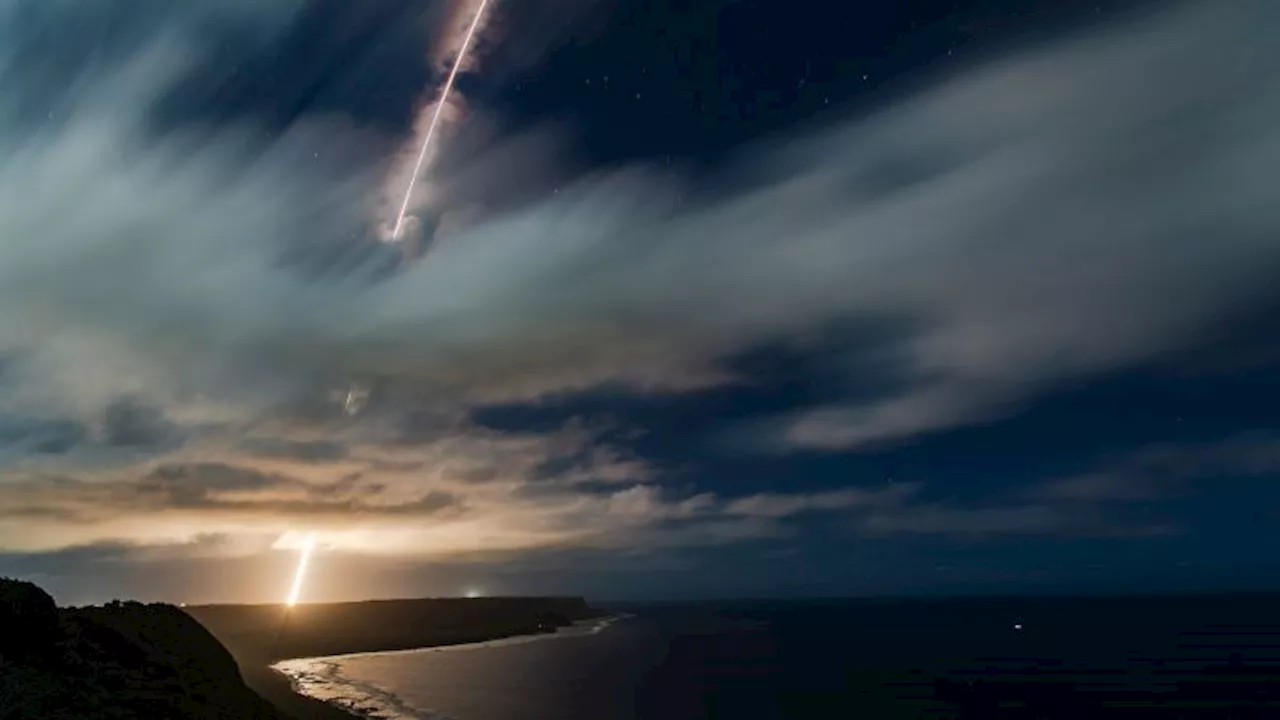This article explores the US military's efforts to build a multi-layered missile defense system on Guam, a strategically important island in the Pacific. It examines the challenges of defending against ballistic and hypersonic missiles, and how Guam's defense system could serve as a model for a larger national shield envisioned by President Donald Trump.
President Donald Trump has called for an expansive, next-generation missile defense shield for the mainland United States, something modeled on Israel’s formidable defenses, typified by its signature Iron Dome system. A defensive dome for the US – a country hundreds of times the size of Israel – would require massive scale, as well as space-based interceptors, and almost certainly be decades away.
Yet on the piece of US soil perhaps most vulnerable to missile attacks – the Pacific island of Guam – work is well underway on the kind of multi-layered missile defense that could point the way. However, experts say even that faces steep challenges. “There are no fast or panacea solutions, and we are making the decisions late in the game even though visionary military and political leaders saw this coming in the 1990s,” said Carl Schuster, a former director of operations at the US Pacific Command’s Joint Intelligence Center. Guam’s early success The US territory of Guam, a 210-square-mile island in the Pacific Ocean, is home to just under 175,000 people. It also hosts Andersen Air Force Base – a key deployment base for US Air Force bombers such as the B-1 and B-52 and sometimes the stealthy B-2 – and is homeport to US nuclear attack submarines that could be vital in any defense of Taiwan. The island is less than 1,900 miles (3,000 kilometers) from China (PRC) and 2,100 miles from North Korea. Mockups of it have shown up in China’s military propaganda videos, and North Korea has made threats against it. But the US military has not stood still, advancing its ability to defend against regional threats. Just last December, the US Missile Defense Agency (MDA) conducted the first successful intercept of a ballistic missile target from the island using the Aegis Guam System, which fired a land-based interceptor of the type that US Navy ships have used to destroy ballistic missile targets in testing. “Current forces are capable of defending Guam against today’s North Korean ballistic missile threats. However, the regional threat to Guam, including those from PRC, continues to rapidly evolve,” the MDA’s director for operations, Michelle Atkinson, said in 2023. In the December test, a US Air Force C-17 plane released a medium-range ballistic missile target off Guam’s coast. After the target was tracked by powerful radar, an interceptor was fired from a Vertical Launch System on the island, taking it out outside Earth’s atmosphere, according to releases by MDA and Lockheed Martin, the manufacturer of the Aegis system on Guam. It was a “a critical milestone in the defense of Guam and the region,” said US Navy Rear Adm. Greg Huffman, commander, Joint Task Force-Micronesia. But the intercept test went beyond the land-based Aegis system, with other military elements testing systems that would form key parts of the multi-layered concept Trump would like to see. That’s something akin to what Israel fields, a four-tiered system often lumped under the “Iron Dome” moniker, after its best-known and lowest layer. While the Iron Dome combats incoming rockets and artillery weapons, David’s Sling protects against short- and medium-range threats, and the Arrow 2 and Arrow 3 systems stop ballistic missiles. In a nod to a similarly layered defensive structure, US Indo-Pacific Command said it used December’s intercept to test tracking capabilities of the US Army’s Terminal High Altitude Area Defense (THAAD) system based on Guam. THAAD is designed to stop incoming missiles in their terminal, or descent, phase of flight, while Aegis makes its intercept in the mid-course phase, outside Earth’s atmosphere, before the missiles dive on their target. The US military also employs Patriot missile batteries, designed to make much lower-altitude intercepts, as the final phase of Guam’s defense. Both the THAAD and Patriot systems have been successfully used in combat. All three – Aegis, THAAD and Patriot – will eventually form what is called the Enhanced Integrated Air and Missile Defense System (EIAMD) on Guam, which the MDA says will provide “360-degree coverage, and layered defense against regional ballistic, maneuvering ballistic, hypersonic glide, and cruise missile threats.” That system would also rely on input from US satellites and space-based sensors, according to the MDA, inching it closer to Trump’s missile defense vision. Difficult challenges But the timeline for full Guam missile defense – expected to take at least a decade to put together – is indicative of the challenges in constructing any system to fight ballistic and hypersonic glide missiles. That’s not helped by constant technological advances in missile technology, which often evolves more quickly than ways to defend against it. And Trump’s concept of a next-generation missile defense for the continental US goes well beyond what is still years away on Guam, an island about 10 times the size of Manhatta
Missile Defense Guam Trump Administration US Military Ballistic Missiles Hypersonic Weapons National Security Iron Dome Aegis THAAD Patriot
United States Latest News, United States Headlines
Similar News:You can also read news stories similar to this one that we have collected from other news sources.
 Israel's Iron Dome: A Shield Against Missile ThreatsThis article explores Israel's Iron Dome air defense system, its genesis during regional conflicts, its multi-layered defense strategy alongside David's Sling and Arrow systems, and its operational strengths and potential vulnerabilities.
Israel's Iron Dome: A Shield Against Missile ThreatsThis article explores Israel's Iron Dome air defense system, its genesis during regional conflicts, its multi-layered defense strategy alongside David's Sling and Arrow systems, and its operational strengths and potential vulnerabilities.
Read more »
 Iran Unveils Underground Missile Facility, Announces New Missile DevelopmentIran's Islamic Revolutionary Guard Corps (IRGC) unveiled an underground missile storage facility and announced the development of 'new special missiles'. Video footage showed IRGC commanders touring the site, which was used in operations against Israel in the past. The IRGC also revealed plans for new drills and war games this month, showcasing 'missile and drone cities'. Iran aims to demonstrate its military capabilities and regional influence despite recent challenges.
Iran Unveils Underground Missile Facility, Announces New Missile DevelopmentIran's Islamic Revolutionary Guard Corps (IRGC) unveiled an underground missile storage facility and announced the development of 'new special missiles'. Video footage showed IRGC commanders touring the site, which was used in operations against Israel in the past. The IRGC also revealed plans for new drills and war games this month, showcasing 'missile and drone cities'. Iran aims to demonstrate its military capabilities and regional influence despite recent challenges.
Read more »
 Mayorkas extends deportation shield for eye-popping number of immigrants ahead of Trump adminThe Biden administration on Friday announced that it is extending Temporary Protected Status for Salvadoran nationals ahead of the incoming Trump administration.
Mayorkas extends deportation shield for eye-popping number of immigrants ahead of Trump adminThe Biden administration on Friday announced that it is extending Temporary Protected Status for Salvadoran nationals ahead of the incoming Trump administration.
Read more »
 Melania Trump's Inauguration Outfit: A Regal Shield or A Calculated Distance?Melania Trump's attire for the 2021 US Presidential Inauguration drew attention for its precise, structured silhouette and a prominent boater hat. Fashion experts interpreted the look as a departure from her previous style, potentially reflecting a desire for privacy and creating distance from the outside world. The article also highlights the fashion choices of other attendees, including Jill Biden, Usha Vance, Priscilla Chan, and Lauren Sanchez, contrasting their styles with Trump's.
Melania Trump's Inauguration Outfit: A Regal Shield or A Calculated Distance?Melania Trump's attire for the 2021 US Presidential Inauguration drew attention for its precise, structured silhouette and a prominent boater hat. Fashion experts interpreted the look as a departure from her previous style, potentially reflecting a desire for privacy and creating distance from the outside world. The article also highlights the fashion choices of other attendees, including Jill Biden, Usha Vance, Priscilla Chan, and Lauren Sanchez, contrasting their styles with Trump's.
Read more »
 Biden Issues Mass Pardons, Including Fauci, in Bid to Shield Against Trump RetaliationFormer President Joe Biden issued a series of pardons in his final hours, including one for Dr. Anthony Fauci, the nation's leading voice during the COVID-19 pandemic. The move was widely seen as a preemptive measure against potential retribution from the incoming Trump administration known for its willingness to target those who opposed or investigated the former president.
Biden Issues Mass Pardons, Including Fauci, in Bid to Shield Against Trump RetaliationFormer President Joe Biden issued a series of pardons in his final hours, including one for Dr. Anthony Fauci, the nation's leading voice during the COVID-19 pandemic. The move was widely seen as a preemptive measure against potential retribution from the incoming Trump administration known for its willingness to target those who opposed or investigated the former president.
Read more »
 Trump Prioritizes 'Immediate' Construction of Iron Dome-Like Shield for USPresident Donald Trump declared the construction of a US-based Iron Dome-like missile defense shield a top priority, calling for immediate action and signing an executive order on Monday. He emphasized the need to protect Americans, referencing past US assistance to other countries without adequate self-defense. Trump highlighted the advancement of US technology, comparing it to Israel's successful Iron Dome system.
Trump Prioritizes 'Immediate' Construction of Iron Dome-Like Shield for USPresident Donald Trump declared the construction of a US-based Iron Dome-like missile defense shield a top priority, calling for immediate action and signing an executive order on Monday. He emphasized the need to protect Americans, referencing past US assistance to other countries without adequate self-defense. Trump highlighted the advancement of US technology, comparing it to Israel's successful Iron Dome system.
Read more »
